Back to Journal
27 November 2008
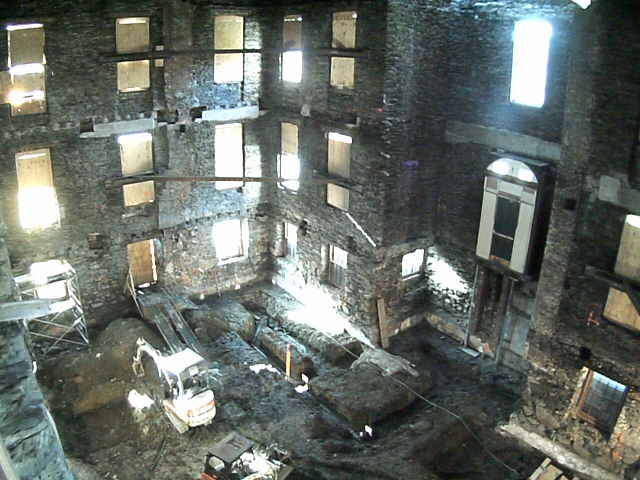
26 November 2008
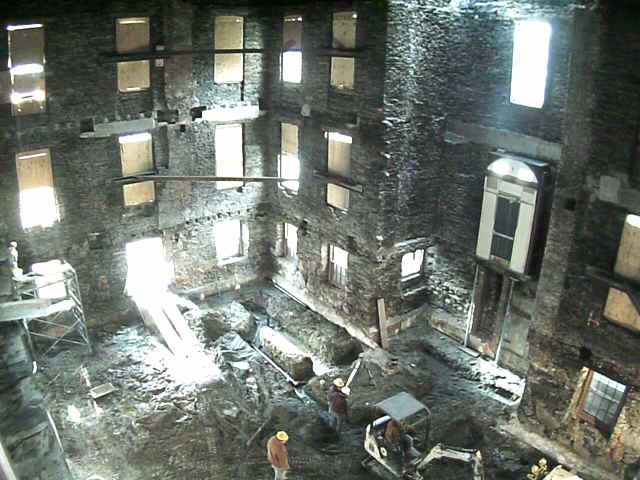
24 November 2008
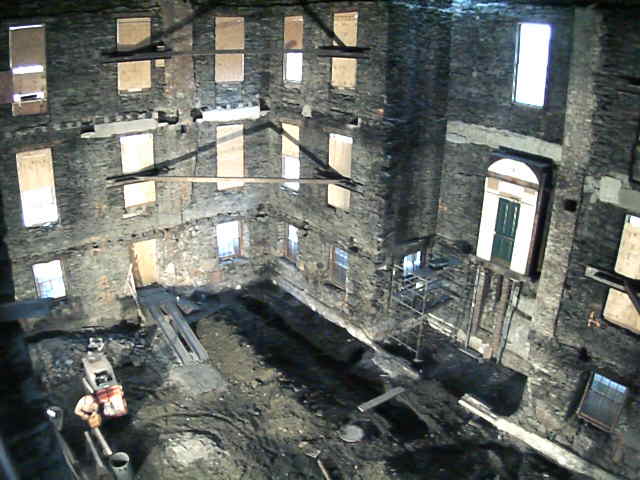
20 November 2008
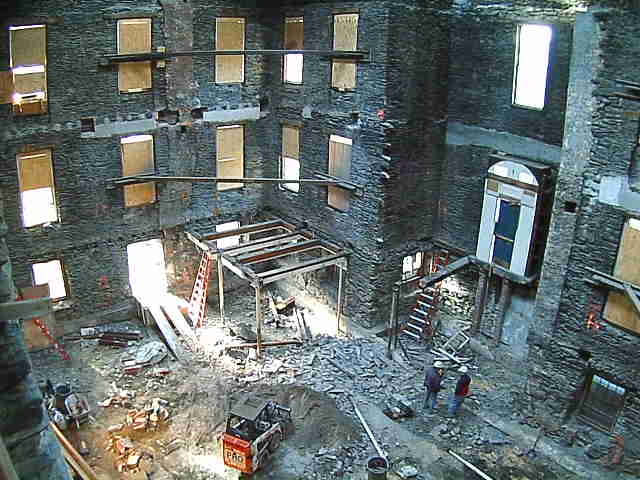
19 November 2008
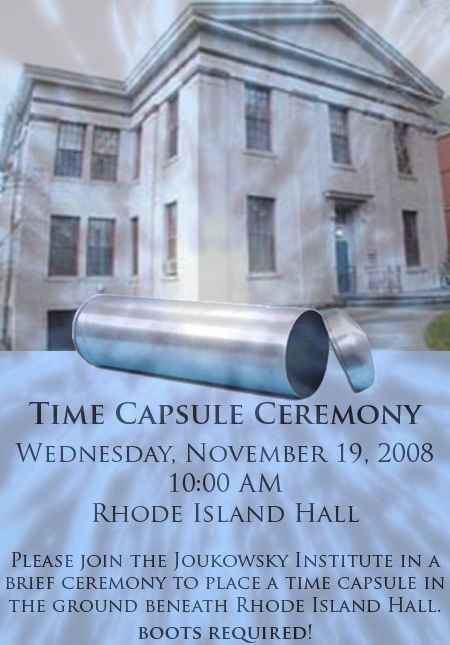
Thanks to everyone who came to the Time Capsule Ceremony today. It was a huge success, with standard-bearers, drummers (well, one drummer actually), and "Taps" played on the accordion. There were also some archaeology chants and salutes to Marcus Aurelius thrown in every now and then.
The ceremony also featured speeches and prayers/offerings to the archaeology gods by Susan Alcock, Ömür Harmansah, Michelle Berenfield, Cecelia Feldman Weiss, Thomas Garrison, and Stephen Houston, as well as a genuine human sacrifice courtesy of Roderick Campbell, Bradley Sekedat, and Thomas Leppard.
The event was very fun, and I will post a video within the week.
18 November 2008
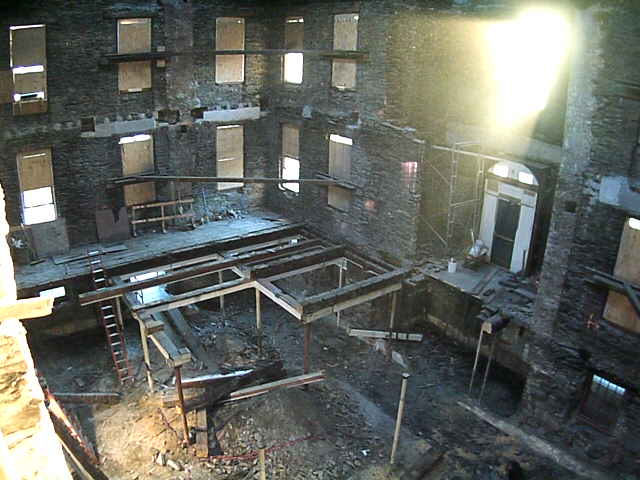
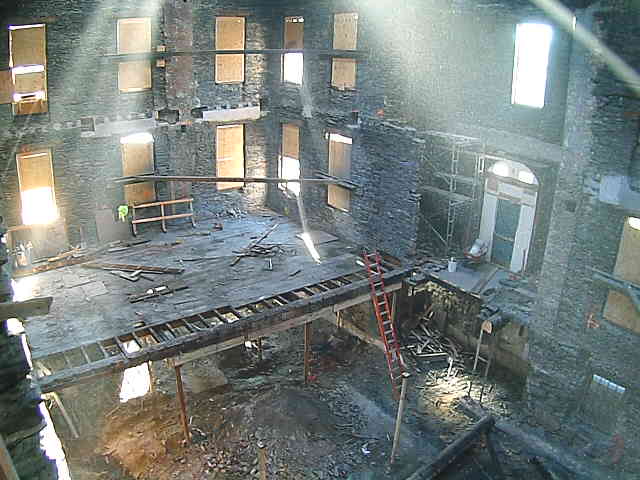
17 November 2008
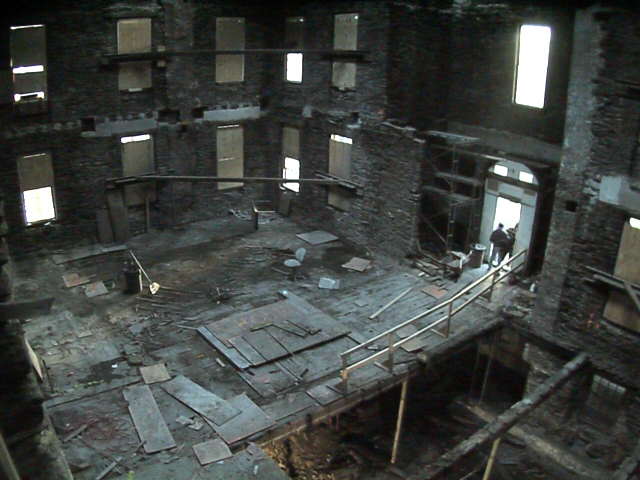
Today I met with Professor Chris Witmore to discuss how he can provide insight into this project. He told me that in order to document the transformation of Rhode Island Hall, I must record everything in all forms of media. I have been doing my best so far, but he said to be honest about the obvious constraints (I cannot be in Rhode Island Hall at all hours of the day). However, he gave me some important advice that I will definitely take into account from now on. Instead of going to Rhode Island Hall the same times each week, I should correspond more with the people on site, so that I can be there during some of the most important parts of the construction process. In order to do so, I have e-mailed contractor Bill Mueller in order to begin to stay more up-to-date on the most important phases of the renovation.
Professor Witmore also pointed me towards the book "Pandora's Hope" by Bruno Latour. The second chapter deals with the documentation of a scientific study in the Amazonian rainforest. The book will give me examples of ethnographies of biologists, an insight into the process of transformation, and all in all, I will find that such a process is not linear, rather it is full of twists and turns. I have already seen the redesigning of plans during my experience with the renovation of Rhode Island Hall, notably in the change in elevator shaft size and the design of the stucco.
I have to admit that after meeting with Chris Witmore, I am disappointed that I have not been able to document more during the first, most crucial stages of the renovation. However, I know that professional photographers have been documenting the progress of the construction quite often, so I will correspond with Bill Mueller about that soon.
On another note, some of Elise Nuding's requests for material culture were heeded. I (or we) will photograph these materials soon and post them on the wiki. I will also post some of the video I have captured before the end of the week.
I also posted an outline for my thesis under Outline and Drafts. This section will be updated often over the next months!
14 November 2008
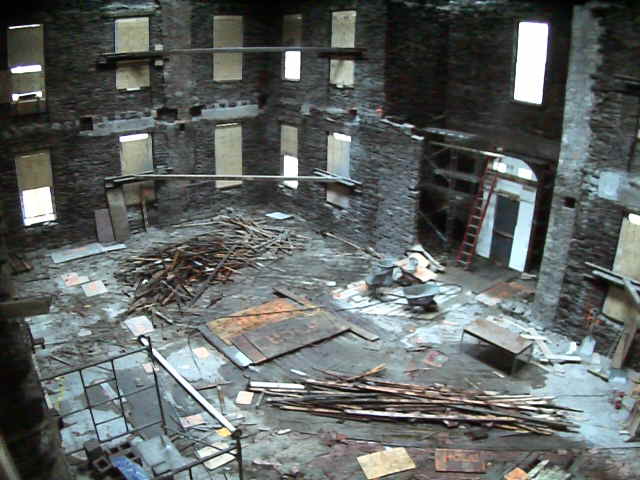
13 November 2008
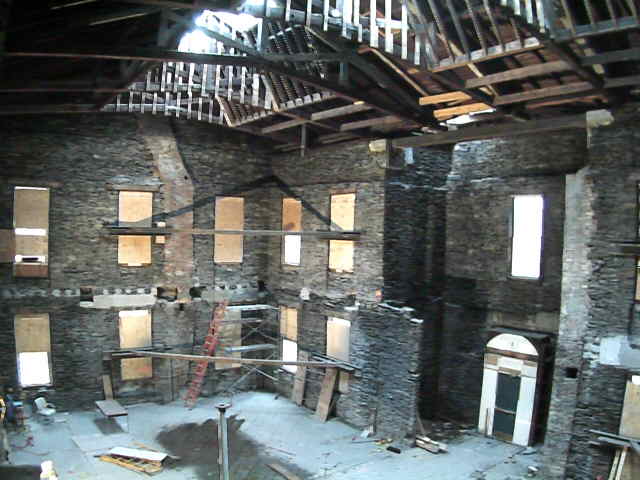
I met with Professor Ömür Harmansah today, and we had a fascinating discussion about the direction of this project. I asked him specifically about how I could incorporate memories of space into my thesis, and these are some of the ideas he suggested:
Professor Harmansah recommended a the book "Move: Sites of Trauma" by Johanna Dickson about a neighborhood in Philadelphia that became involved in the"politics of forgetting." One house in the neighborhood became the base for a revolutionary group in the '70s and '80s that was fighting against class segregation. To make a long story short (and I still need to read the book), the city bombed the entire neighborhood in order to eradicate this group. The city rebuilt the neighborhood, constructing houses without porches (virtually to imprison the inhabitants inside their own homes). And to top it all off, the police moved into their new station on the spot where the base of the revolutionary group had been!
Though the above scenario is certainly an extreme case, some of these themes of abandoning a building, erasing the ethnography of place and space, and then reconstructing it could apply to one of the main questions of this project: how does historic preservation take into account past uses of a building?
Professor Harmansah also told me about a project for a class he taught at Reed about rebuilding structures. One building on the campus was being restored into a student center (similar to J. Walter Wilson at Brown), and another structure that students addressed in the course was known as the Blue Light Bridge, which crosses a canyon and connects the north and south halves of the college. The first cross-canyon bridge was less stable and accessible, and thus became a place where students would engage in certain illicit activities. In 1992, the college built a new bridge with bright lights to prevent such activities, erasing the memory of the old bridge.
Building are always sites of accumulation, as could be seen in Rhode Island Hall, and new building projects tend to become "wiping-out" processes. For this reason historic preservation and the documentation that Elise Nuding carried out last year, which I am continuing to pursue, are so important.
Professor Harmansah also gave me his impressions of the state of the building last year. He described Rhode Island Hall as being made up of "paper" walls covered in advertisements. The nature of the building, holding the Office of International Programs and the Writing Fellows necessitated such a display of information. These "paper" walls along with the organization of rooms into compartments gave the building a claustrophobic and closed feeling. Professor Harmansah brought up the philosophy of heterotopia developed by Michel Foucault. Heterotopia means "other place," as opposed to utopia ("no place"). In other words, one type of heterotopia is a place where events and memories take place out of sight. The design of Rhode Island Hall created a sense of heterotopia, especially in the area of Psychological Services. Rhode Island Hall was home to offices like Psychological Services and the Writing Fellows where students would seek privacy in order to receive personal help.
Rhode Island Hall was unique on this campus in that it was used for so many different functions focused around classroom space and office space. Most buildings on campus are for either classroom or office space, rarely for both. How did Rhode Island Hall transform from being used for a single purpose (natural history) to multi-purpose? Rhode Island Hall seemed to hold programs such as the Office of International Programs or Writing Fellows that could not have been placed anywhere else (could you imagine putting Psychological Services in Sayles Hall?). Rhode Island Hall was the appropriate place (Roman decorum) for these seemingly random and unrelated functions.
Thus, not only is the renovation and redesign of Rhode Island Hall's interior an example of the transformation of Rhode Island Hall, but the metamorphism from a melange of eclectic purposes to a focused institution fits nicely into the theme addressed by this thesis project.
12 November 2008
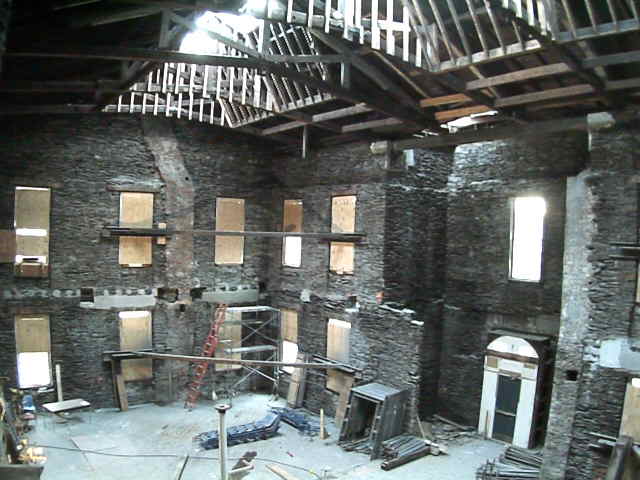
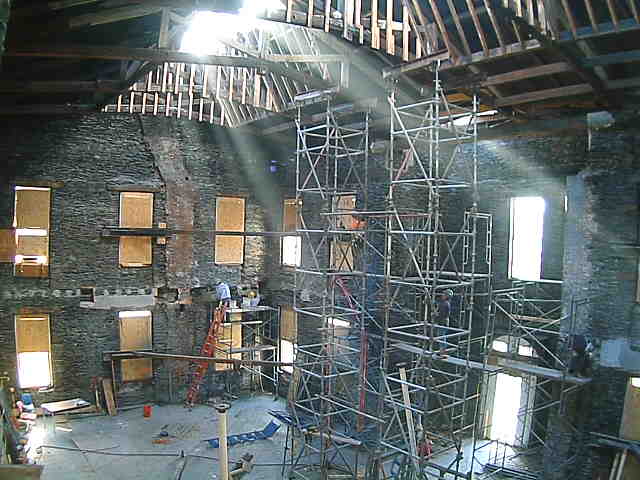
I thought it might be fun to post a shot from the webcam every day I post something in this journal section.
Susan Alcock, Sarah Sharpe, Diana Richardson, and I all met today to plan the Time Capsule that will be buried underneath Rhode Island Hall. We will be accepting objects that fit into any of the following categories: A Day in the Life of the Joukowsky Institute (anyone who has taken an archaeology course is encouraged to submit at least one item -- if you are a concentrator doing so is mandatory!), Life on Campus, The Year 2008, The State of Archaeology. Please e-mail your ideas to any of us, or drop the objects off in the boxes on the first floor of the Joukowsky Institute.
Again, the ceremony will be next Wednesday, November 19 from 10 to 10:30 AM.
6 November 2008
I took some pictures of the new steel beams today -- I even got some action shots of the welding. I will post these pictures as soon as I upload them from my camera. I am thinking of incorporating the photo and journal section to simplify matters. I also have some video that I will post as soon as I figure out the best way to do so (directly on to this wiki vs. on youtube).
5 November 2008
Every Wednesday, the architects, Susan Alcock, Sarah Sharpe, and myself meet on the site to discuss how the construction is progressing. I will ask if I can post some of the meeting minutes. In summary, some of the major issues at the moment are the steel frames, elevator shaft, stucco, and time capsule.
The steel frames have arrived and are planned to be installed during this coming week. The frames will be lowered from the roof (that explains the crane!) and welded into the proper places.
The elevator shaft is currently being redesigned -- apparently it needs to be four inches larger than expected. AWA and Brown are also looking into adding key card access to the elevator for after hours. Doing so would benefit security of the building, especially the materials that will be stored in the new vault. Which brings up another issue: apparently some of the items from Petra are stuck in customs in Cranston. Yes homeland security is worried about "a bunch of rocks" as Shawmut employee Michael Sitkin describes it.
Stucco is also proving to be a difficulty. Replacing the stucco on Rhode Island Hall is one of the project's most vital goals, as the stucco has failed multiple times in the past. To replace the stucco, the architects need to come up with a longterm solution that not only will last, but that will also take into consideration the historical color of the building's exterior (yes, that ugly pink/grey). The problem is that we are now in November and it's going to start getting cold really fast. Maybe we'll be lucky though -- we have had warm weather lately. If the weather does take a turn for the worst, SDC is exploring ideas for temperature heating for the "mock-ups."
The time capsule is another exciting part of this project. SDC will be burying a time capsule (underneath the vault, I believe). The time capsule is still in the planning stages, and all are welcome to donate objects for posterity. The ceremony will be Wednesday, November 19 from 10 to 10:30 AM.
Back to Journal
